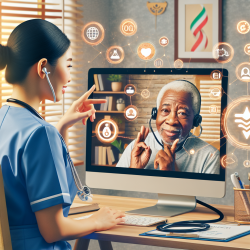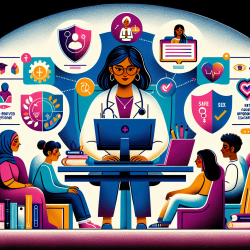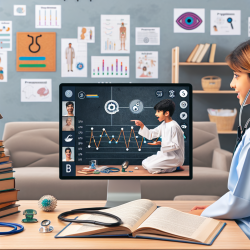In the realm of speech-language pathology, the integration of technology into therapeutic practices is an ever-evolving field. A recent study, "Assessing the Use, and Readiness for Internet Videoconferencing with Practitioners and Administrators of a Rehabilitation Program for Signing Deaf Adults," provides critical insights into the implementation and utilization of videoconferencing services. Here, we will explore how practitioners can leverage these findings to improve their practice and encourage further research.
Key Findings of the Study
The study conducted by Hotton, Vincent, and Bergeron (2014) aimed to:
- Describe the use of an Internet videoconferencing service by practitioners during its first year.
- Evaluate the readiness for this service.
- Identify barriers to the implementation from the perspective of practitioners and administrators.
Limited Utilization and Readiness
The results highlighted a limited use of the videoconferencing service. Quantitative data revealed that out of 10 practitioners, only six used the service at least once during the year, with varying frequency. The primary reasons for this limited use included:
- Restricted need for this means of communication.
- Financial constraints.
- Deployment methods.
Barriers to Implementation
The study identified several barriers to the successful implementation of the videoconferencing service:
- Financial Support: Limited financial resources hindered both the organization and the clients from fully utilizing the service.
- Technical Support: Lack of technical support for clients, particularly those unfamiliar with the technology.
- Awareness: Inadequate dissemination of information about the service to potential users.
Recommendations for Practitioners
To improve the use and effectiveness of videoconferencing services, practitioners can consider the following recommendations based on the study's findings:
1. Comprehensive Needs Assessment
Conduct a thorough needs assessment involving both practitioners and clients to ensure that the service meets the actual communication needs. This step is crucial for aligning the service with user requirements and increasing its adoption.
2. Financial and Technical Support
Secure adequate funding to provide necessary equipment and technical support to clients. This includes offering training sessions to familiarize clients with the technology, ensuring they can use it effectively.
3. Awareness Campaigns
Implement robust awareness campaigns to inform potential users about the availability and benefits of the videoconferencing service. Utilize various communication channels, including community outreach and social media, to reach a broader audience.
4. Collaboration with Community Partners
Work closely with community organizations and other stakeholders to create a supportive network for clients. This collaboration can help in pooling resources and providing a unified approach to telecommunication services.
Encouraging Further Research
The study by Hotton et al. (2014) provides a foundational understanding of the challenges and benefits associated with videoconferencing services for signing deaf adults. However, there is a need for further research to explore:
- Long-term impacts of videoconferencing on client outcomes.
- Best practices for integrating videoconferencing into existing therapeutic frameworks.
- Technological advancements that can enhance the quality and accessibility of videoconferencing services.
To read the original research paper, please follow this link:
valuation de lutilisation et de la rceptivit pour la vidoconfrence par internet chez les intervenants et les gestionnaires dun programme de radaptation pour adultes sourds gestuels / Assessing the Use, and Readiness for Internet Videoconferencing.










